#Kashmiri silk jackets
Text
A Tapestry of Elegance: The Rich History of Kashmiri Fashion
The picturesque region of Kashmir has long been revered for its breathtaking landscapes, vibrant culture, and exquisite craftsmanship. Renowned for its intricate textiles, delicate embroidery, and timeless silhouettes, Kashmiri fashion boasts a rich and storied history that spans centuries. Let us embark on a journey through time to uncover the captivating tale of Kashmiri fashion.
The history of Kashmiri fashion dates back to ancient times, with the region's artisans honing their craft through generations of skill and innovation. One of the most iconic elements of Kashmiri fashion is the Pashmina shawl, renowned for its unparalleled softness and intricate embroidery. Made from the fine wool of the indigenous Pashmina goat, these luxurious shawls have been prized by royalty and nobility for centuries, earning Kashmir the title of "The Land of Pashminas."
During the Mughal era, Kashmiri fashion flourished under royal patronage, with emperors and empresses commissioning exquisite textiles and garments adorned with intricate patterns and motifs. The art of Kashmiri embroidery, known as Kashida, reached new heights during this period, with skilled artisans creating breathtaking designs inspired by the region's flora, fauna, and cultural heritage.
In the 19th century, Kashmiri fashion captured the imagination of the Western world, as European travelers and traders marveled at the beauty and craftsmanship of Kashmiri textiles. Shawls became coveted fashion accessories among the elite, with European fashion houses incorporating Kashmiri motifs into their designs. This period of cultural exchange not only fueled demand for Kashmiri textiles but also influenced fashion trends across continents.
However, the history of Kashmiri fashion is not without its challenges. Political unrest and conflict in the region have posed significant obstacles to the preservation and promotion of traditional craftsmanship. Despite these challenges, Kashmiri artisans have persevered, adapting their techniques to changing times while staying true to their cultural heritage.
Today, Kashmiri fashion continues to captivate audiences around the world with its timeless elegance and artisanal craftsmanship. From intricately embroidered shawls to finely woven sarees and intricately embellished jackets, Kashmiri designers are reinterpreting traditional motifs and techniques for the modern age, infusing their creations with a contemporary flair while preserving the essence of Kashmiri heritage.
One of the most remarkable aspects of Kashmiri fashion is its sustainability and eco-friendliness. The use of natural fibers such as wool, silk, and cotton, combined with traditional dyeing and weaving techniques, ensures that Kashmiri textiles are not only luxurious but also environmentally friendly. In an age where sustainability is increasingly valued, Kashmiri fashion offers a timeless alternative to fast fashion, celebrating the beauty of slow, artisanal craftsmanship.
As we reflect on the history of Kashmiri fashion, we are reminded of the enduring power of tradition, creativity, and resilience. Despite the passage of time and the challenges of a rapidly changing world, Kashmiri fashion continues to thrive, enchanting us with its beauty and elegance. Whether draped in a sumptuous Pashmina shawl or adorned with intricately embroidered motifs, Kashmiri fashion invites us to immerse ourselves in a world of timeless grace and exquisite craftsmanship. Explore the magical world of authentic kashmiri couture at Luxuries of Kashmir.

#Kashmiri Fashion#Luxuries of Kashmir#latest dress design#kashmiri dress#kashmiri collection#Luxury of Fashion
0 notes
Text
UNVEILING THE ELEGANCE, A TIMELESS EMBELLISHMENT & IMPECCABLE HANDCRAFT: GOTTA PATTI
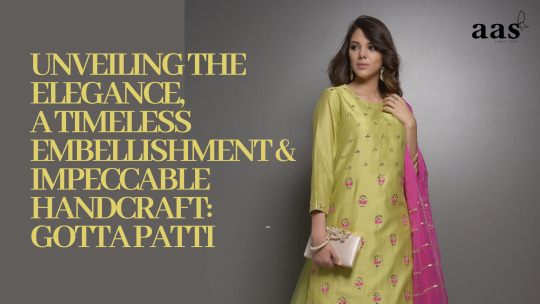
In the realm of Indian textiles and crafts, among various states with distinguished weaving patterns and embroidery, age-old embroidery technique, originating from the desert state of Rajasthan, has adorned traditional garments for centuries. In this blog post, we delve into the world of Gotta Patti, exploring its history, significance, and the process behind creating this stunning embellishment.
THE ORIGIN OF RICH HISTORY OF GOTTA PATTI:
We uncover the historical roots of Gotta Patti, tracing its origins to the land of kings and queens. We explore its cultural significance and how it has been an integral part of Rajasthan's textile heritage for generations. Gota patti was an integral part of outfits worn by Mughal and Rajput royalty of yore. Gota Patti was favourite royal families because gota used to be of gold and silver which signified and depicted richness & class. Gota patti is unique for its colour and intricate workmanship thus it’s a favourite must have of bridal trousseau.
WHAT’S GOTA?

Gota is basically gold and silver lace from Lucknow. This metallic lace is made up of metal-coated weft yarn, while the warp yarn includes ribbons of fibres like cotton, silk and polyester. Metal coated yarn is called ‘Zari’. The zari threads are usually real silver, gold-plated or an imitation made with a copper base, and gilded with gold or silver colour.
How was gota patti created?
HERE'S A STEP-BY-STEP PROCESS OF HOW GOTA PATTI EMBROIDERY IS TYPICALLY DONE:
DESIGN PREPARATION:
The first step in Gota Patti embroidery is designing the pattern or motif. The motifs and patterns commonly found in Gotta Patti work are floral, paisley, and geometric designs, each carrying its own symbolism and charm. Skilled artisans sketch the design on paper or directly on the fabric using a pencil or chalk.
GOTA SELECTION:
Once the design is finalized, the appropriate gota ribbons from the different types of gota patti include seekhi, phool, bijiya, mothda, bakhandi and lappa etc are chosen. Seekhi gota is categorised by a silver and gold ribbon of gota used as a lace trim, while phool gota spotlights gota circles that are pleated on the ensemble.The Gota is available in various colors, widths, and patterns. Traditionally, gold or silver gota was used, but nowadays, imitation gota in a wide range of colors is also used to create vibrant designs.
FABRIC, CUTTING AND SHAPING GOTA, FIXING GOTA ON FABRIC:

It's important to note that Gota Patti embroidery is a labor-intensive and intricate process that requires skilled craftsmanship. Artisans who specialize in this art form spend years honing their skills to create stunning Gota Patti designs.
Gota patti is mainly used on lightweight fabrics like chiffon, georgette, tussar silks and crepes and even Banarsi fabrics.
Common shapes include leaves, flowers, and geometric patterns. The cut gota pieces are shaped by folding or twisting them to create dimensional elements.
Using a needle and thread, the shaped gota pieces are carefully stitched onto the fabric following the design outline. The gota is secured by stitching along the edges, ensuring it is firmly attached to the fabric. The skilled artisans sew gota patti, zari threads, sequins, and beads, to create intricate designs using Zarodazi style of embroidery stitch to bring these designs to life.
GOTTA PATTI IN CONTEMPORARY FASHION:
Gotta Patti has transcended its traditional roots and found a place in the modern fashion landscape. Designers have incorporated Gotta Patti into contemporary garments and accessories, making it accessible to a wider audience. The versatility of Gotta Patti can be shown by its usage in sarees and lehengas to jackets and handbags etc. These days Gota Patti is combined with other forms of hand embroidery to give it a contemporary look eg. Gota Patti is combined with Lucknowi embroidery, phulkari embroidery and even Kashmiri. Gota Patti is also done on prints, tie & dye, marble dye etc to give a new look to the traditional art form of Gota patti.
CARING FOR GOTTA PATTI:
To ensure the longevity of Gotta Patti garments and accessories, proper care is essential. In this section, we provide valuable tips on how to clean, store, and maintain these delicate pieces. By following these guidelines, you can preserve the beauty and intricacy of Gotta Patti embroidery for years to come.

WHERE TO FIND GOTTA PATTI:
Finally, we guide readers on where they can find authentic Gotta Patti creations. Whether it's exploring local markets in Rajasthan or shopping online, we provide recommendations and resources to help readers acquire their own pieces of this exquisite craft.
CONCLUSION:
Gotta Patti is a celebration of India's rich cultural heritage and craftsmanship. Its timeless elegance has made it a beloved embellishment worldwide. It's important to note that Gota Patti embroidery is a labor-intensive and intricate process that requires skilled craftsmanship. Artisans who specialize in this art form spend years honing their skills to create stunning Gota Patti designs. Through this blog post, we hope to have deepened your understanding of Gotta Patti, its origins, and its significance in the world of fashion. Embrace the opulence of Gotta Patti and let its intricate beauty weave its magic into your wardrobe.
0 notes
Text
How to Incorporate Cashmere into Your Everyday Wardrobe: Tips from Mauli Cashmere
As the weather turns colder, there's nothing quite like wrapping yourself up in a cozy cashmere shawl or scarf. But many people think of cashmere as a luxury item that's only appropriate for special occasions. In reality, cashmere can be a versatile addition to your everyday wardrobe, elevating even the most basic outfit.
Mauli Cashmere is a leading retailer of Pure Cashmere Shawl and Handmade Kashmiri Shawls. They know a thing or two about incorporating cashmere into everyday outfits. Here are their top tips for adding a touch of luxury to your daily wardrobe.
Invest in a Classic Cashmere Sweater
One of the easiest ways to incorporate cashmere into your everyday wardrobe is to invest in a classic cashmere sweater. Look for one in a neutral color like beige, grey, or black, as these are easy to mix and match with other pieces. Pair it with jeans for a casual look, or dress it up with a skirt or tailored pants. The best part? Cashmere is incredibly soft and comfortable, so you'll feel like you're wearing pajamas all day long. You can Buy Pashmina Shawls Online of the best quality with Mauli Cashmere.
Layer a Cashmere Cardigan
A cashmere cardigan is another great way to incorporate this luxurious fabric into your everyday wardrobe. You can wear it as a light jacket on warmer days or layer it under a coat on colder days. Look for one in a bold color or pattern to add some interest to your outfit.
Wrap Yourself in a Cashmere Shawl
A cashmere shawl is the ultimate cozy accessory. It's perfect for wrapping yourself up in on a chilly day, and it can also be dressed up for more formal occasions. Look for a shawl in a classic color like navy or burgundy, or choose one with a bold print to add some personality to your outfit. Mauli Cashmere offers a variety of Handmade Kashmiri Shawls that are sure to make a statement.
Add a Touch of Luxury with a Cashmere Scarf
A cashmere scarf is a simple way to add a touch of luxury to any outfit. You can wear it with a coat to keep warm, or simply drape it over your shoulders to add some texture and interest to your outfit. Look for a scarf in a fun color or pattern to add some personality to your look.
Mix and Match Textures
Cashmere pairs beautifully with other textures like leather, denim, and silk. Try layering a cashmere sweater over a silk blouse or pairing a cashmere scarf with a leather jacket. Mixing and matching textures can create a visually interesting outfit that's still sophisticated and timeless.
Accessorize with Cashmere Gloves or Mittens
Don't forget about your hands! Cashmere gloves or mittens are a luxurious way to keep your hands warm or cold days. Look for gloves with a fun pattern or choose a classic pair in a neutral color. They're the perfect accessory to complete your winter look with Best Handmade Women's Shawls from Mauli Cashmere.
Conclusion In conclusion, cashmere is a versatile and luxurious fabric that can be incorporated into your everyday wardrobe in a variety of ways. Invest in a classic cashmere sweater or cardigan, wrap yourself in a cozy shawl or scarf, mix and match textures, and don't forget about accessories like gloves or mittens. With these tips from Mauli Cashmere, you'll be able to elevate your style and stay warm all winter long.
#Buy Cashmere Shawls#Buy Kashmiri Shawl Online#Handmade Kashmiri Shawls#Shop Pashmina Shawls Online#Kashmiri Pashmina Shawls#Buy Pashmina Shawls Online#Pashmina Shawls Online#Premium Cashmere Shawls#Shop Cashmere Shawls#Pure Cashmere Shawl#Women's Cashmere Shawl#Cashmere Shawls and Wraps#Women's Cashmere Scarves#Best Handmade Women's Shawls#Handmade Scarves Online#Embroidered Pure Cashmere Stole
0 notes
Text
Kashmiri Aari Embroidered Silk coat/jacket || black color || length:41.5" chest :50"
Price: (as of – Details)
A perfect combination of style and tradition, a match made in the heaven; we presents to you the gorgeous, the beautiful and the awesome range of Silk Coat/ Jackets, a matchless celebration of silk with the traditional threadwork of Kashmir. A magical charisma of serenity and sophistication for all those who wear it. Wear it with a pair of jeans, or any complementing…

View On WordPress
0 notes
Text
Best kashmiri Product You Must Look
Everybody wants to visit Kashmir which is located in the north part of India also everybody wants to try Kashmiri products once so in this blog I will discuss some best Kashmiri product which is only found in Kashmir
1. Kashmiri Pashmina
Pashmina refers to a fine variant of spun cashmere, the animal hair fiber forming the downy undercoat of the Changthangi goats. Pashmina may refer either to the material or to the variant of Kashmiri shawl that is made from it. Both the pashmina and the generic cashmere pashmina come from the same goat, but the pashmina ranges from 12-16 microns in diameter, and the generic cashmere ranges 12-21 microns in diameter.
Pashmina shawl, Kashmiri pashmina scarves, and Gi pashmina are the same kind of products that come out from the pashmina and people adore such products because they are very attractive and their designs are very unique.
While purchasing pashmina various kinds of Kashmiri pashmina namely plains, Kanis , embroidered, jamawars , sozins , papier machie, kalamkaris , and many more however each has a unique characteristic for identification.
Kashmiri pashmina serves the purpose of providing the required warmth during the wintry season. A lot of women use the pashmina scarves around their neck and cover faces to protect themselves from the appalling chillness.
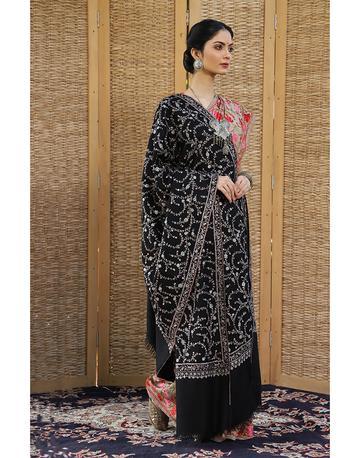
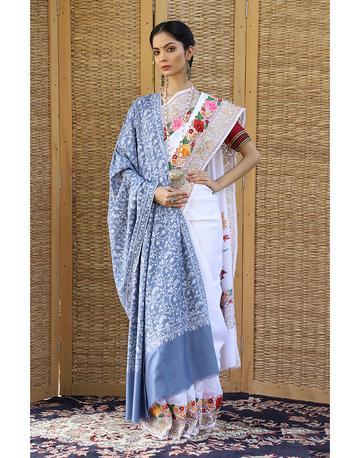


2. Kashmiri Saree
Authentic Kashmir saree is handcrafted in the valley of Kashmir. Every Kashmiri saree is essentially an embroidery saree. Kashmiri sarees are embellished with beautiful, intricate embroidery which is peculiar to Kashmir such as Kashmiri Aari embroidered sarees. This saree mostly has floral designs.
The work on original Kashmiri silk sarees are called kashida embroidery, is a type of needlework from the Kashmir region of India. This work is smooth and done expertly in this single stitch is used to elaborate designs.
Sarees contains various fabric like pashmina, silk, georgette, and crepe. In these sarees only 100% pure and original material is used there is no blend every Kashmiri saree is handwoven by extremely skilled artisans.
Make sure that you handle them with care don’t machine wash your Kashmiri saree. It is best if you get them dry clean especially the silk and pashmina other sarees can gently wash with your hands store your pashmina saree, Kashmiri silk saree, and other Kashmiri saree with care.
It is advised to store them with light muslin cloths. you can store them in saree covers, but make sure that is not made up of plastic. If you get a stain on your saree, you can gently clean it with cold water.


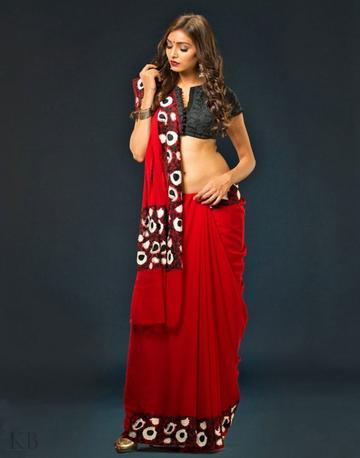

3. Kashmiri Kurta
Indian Traditional wear Kurtis is one of the favorite dress of Indian during festivals among them if you are looking for Kashmiri woolen Kurtis which is somewhat different from the Indian traditional Kurtis and this Kurtis is named as Pheran Pheran is generally made up of silk and wool and it is long as compared to normal Kurtis and worn over the dress like coat it is also known as the traditional dress of Kashmir
Pheran is the most typical attire of Kashmir both Muslim and Hindu wear. This is a long loose gown worn below the knee area. It consists of two gowns one over the other in summer it is made up of cotton but in winter it is made up of wool covering and protecting the body from cold especially during the snow. These dresses are used by the residents of the Kashmir valley.
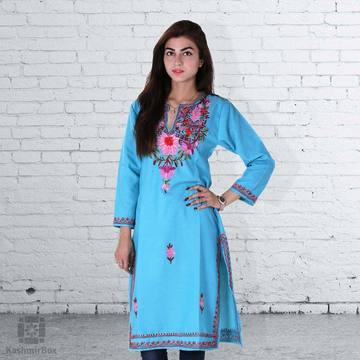
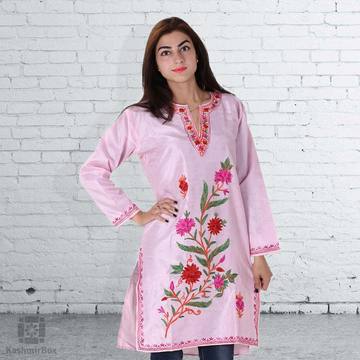
4. Kashmiri Silk Jacket
Kashmiri silk jackets for ladies are the blessings for the women this silk jackets for ladies are very famous any women once see this definitely buy. The design and the colors are very attractive and the jackets are comfortable to wear that’s the reason Kashmiri silk jackets are very adored by women.
Various embroidered silk jackets are available like Red rust Aari , whit pink Aari , Heena green aari , royal blue aari , black aari , ferozi aari , golden aari and many more are the aari embroidered.
These designs look very nice and attractive if you are searching for such sarees on google you get various designs of Kashmiri silk jackets which you adore definitely.
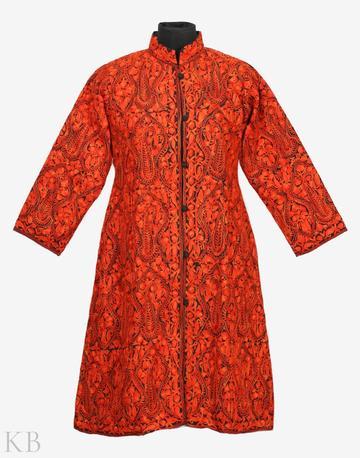
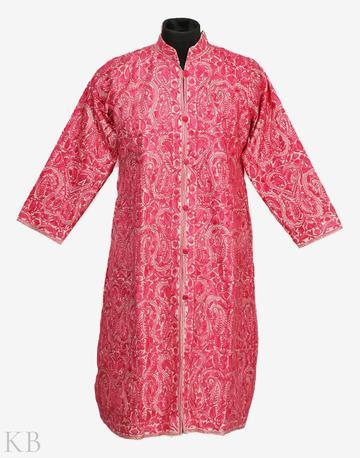
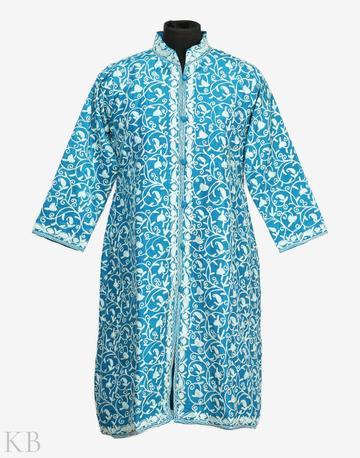
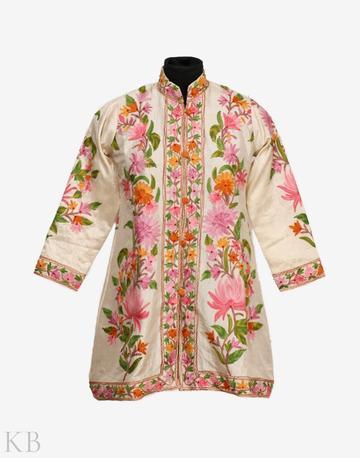
#Kashmiri silk jackets#kashmiri kurti#Kashmiri Aari embroidered sarees#Gi pashmina#Kashmiri pashmina scarves#kashmiri saree
1 note
·
View note
Text
The 1800 Fashion History
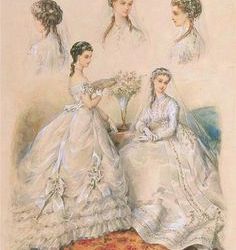
The year 1800 heralded a new century and a new world. The fashion landscape had changed radically and rapidly; the way that women dressed in 1800 stood in stark contrast to the dress of a generation earlier. The wide panniers, conical stays, and figured silks of the eighteenth century had melted into a neoclassical dress that revealed the natural body, with a high waist and lightweight draping muslins (Fig. 1). The origin of this garment was the chemise dress of the 1780s, worn by influential women such as Marie Antoinette and Georgiana, Duchess of Devonshire (Ashelford 174-175). The chemise dress, in part, reflected a neoclassicism that was beginning to emerge in fashion. Interest in classical antiquity had been growing throughout the second half of the eighteenth century, following the excavations of Pompeii and Herculaneum. Classical revivals appeared not only in fashion, but in architecture, the fine arts, and interior design (Davidson 30). However, it was the violently shifting politics at the end of the eighteenth century that spurred this style to the forefront. The French Revolution brought the old world hierarchy crashing down, forever altering dress during the 1790s. The new classical style, imitating the clothing of ancient democracies, seemed to be evidence of a political philosophy on the rise.

.By 1800, the high-waisted silhouette was the prevailing fashion across the Western world (le Bourhis 72). The most extreme manifestations of the Revolutionary classical dress, such as the dampening of gowns so that they clung to the body, were rarely seen after 1800; indeed, those radical fashions had seldom ever been seen outside of France (C.W. Cunnington 26). Still, neoclassicism continued to dominate fashionable dress (Fig. 2). Fashionable women consciously sought to reproduce the supposed fashions of Ancient Greece or Rome. Everything from the hairstyles to the draping shawls evoked antiquity; the preeminence of white as a dress color was due, in part, to the incorrect assumption drawn from classical statuary that classical women only wore white. The slim, vertical line of the garments themselves reflected the neoclassical preference for clean geometry expressed in other visual and applied arts. Fashion historian Philippe Séguy wrote that early 1800s dress “would have been at home in the days of Hadrian” (le Bourhis 73). However, neoclassicism was not the only influence on fashion during the 1800s. Notably, the campaigns of Napoleon Bonaparte brought inspiration from all over the world. For example, his occupation of Egypt popularized turbans for evening wear, and sketches of Egyptian ruins inspired palm motifs (Tortora 313; Foster 13). Towards the end of the decade, Spanish ornamentation, such as slashed sleeves, and a heavy use of fur imported from Russia, Poland, and Prussia was the result of Napoleon’s incursions in those countries (le Bourhis 108-109; C.W. Cunnington 27). Gothic ornament began to appear by 1810, and fanciful elements of pastoral dress were also seen.
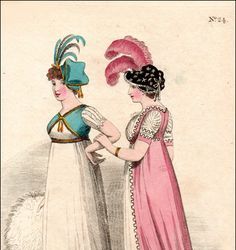
In addition to the very high waistline, directly under the bust, the signature feature of womenswear was the prominent use of fine cotton muslin; it achieved a lightness and drape that could not be accomplished with wool or silk (Byrde 23; Foster 12). The main form of dress construction was the “stomacher” or “fall front” dress. This consisted of a bodice front attached to the skirt which was partially cut in a flap; once the wearer pulled on the sleeves and fastened the inner bodice lining, the skirt flap was pulled up where it was fastened with ties around the “waist” and the bodice front was pinned into place (Johnston 166; C.W. Cunnington 31-32). Figure 3 illustrates this construction method. This type of dress was known as a “round gown.” Around 1804, some dresses were made with button fastenings up the center back of the bodice; these were referred to as frocks (Davidson 26).
Dresses saw minor changes during the 1800s, losing much of the rounded volume of the previous decade. By 1810, skirts were much straighter, and the fullness that was left in the skirt was concentrated at the back, while the front was flat, falling straight to the floor (Fig. 4). In the early years, long trains were common on fashionable gowns, for both day and evening wear, but these began to gradually disappear around 1807 (Byrde 24; Foster 21, 29). The straighter, slimmer appearance of the 1800s was also echoed in the bodice back which featured seams that created a distinctive “kite” or “diamond” shape and gave a very slim, small-backed effect. Finally, straight, narrow sleeves too reinforced the clean lines (Davidson 26; Johnston 56). Importantly, part of the neoclassical ideal was the beauty of the natural, nude body. Fashion legends abound that tell of women leaving off their stays entirely, and appearing with very little underwear at all; while it seems that some women really did abandon their stays, the practice was not widespread or mainstream. Instead, nudity was suggested in the revealing cut of dresses. Large portions of the chest and back were bared even in day dresses, sleeves were short, and draping muslin revealed the shape of the leg (Fig. 5) (C.W. Cunnington 28; Davidson 63-64; Laver 155). Of course, this new style of dress did force a change in underwear. The narrowed skirt only required a single petticoat; indeed one was necessary for modesty beneath the nearly-transparent muslin (Byrde 25). Both long and short stays were worn; the new term “corset” referred to lightly boned or even simply corded supports, and these were often worn instead of stays. The chief goal of any supportive undergarment was to raise and shape the breasts, as their natural roundness was desirable for the first time (Davidson 64). Finally, throughout the decade, the fullness in the back of the gown was supported by a bustle pad attached to the inside of the skirt (Johnston 166; C.W. Cunnington 32-33).

The neckline of dresses, for both day and night, was quite low and could be either square or V-neck. During the day, the low neckline could be filled in with a chemisette or tucker (Foster 22). In the early years, the most fashionable sleeve was short for both day and night. Later in the decade, long sleeves were also worn, and they began to gain some fullness at the sleeve head (Davidson 288-289). In the evening, there was a fashion for short overdresses or tunics which borrowed from the ancient Greek chlamys (Fig. 6). While white was considered correct for evening, the nearly transparent muslins were sometimes worn over colored silk slips, creating shimmering pastels (Fig. 4) (Byrde 25-27; C.W. Cunnington 29-30).
Textiles of the 1800s were often enriched with embroidery, one of the few elements permitted to disrupt the classical line. Whitework, colored and gilt threads, and chenille were all employed to decorate gowns with a variety of embroidered designs (Figs. 2, 7) (Johnston 146, le Bourhis 95, 104). While white was undoubtedly the most modish color for dresses, it was difficult and costly to maintain. Sturdier printed cottons and patterned silks were common for daywear, and warmer wools were acceptable in the winter months (Figs. 3, 8) (Byrde 27).
A discussion of 1800s textiles would be incomplete without mention of the resurgence of French silk. In 1804, Napoleon declared the Empire, becoming Emperor, and he revived the luxury and pomp of the ancien régime, instituting lavish court dress once again. Napoleon gave the silk industry a much-needed boost in an imperial decree that French silk be worn at formal ceremonies (Fig. 9). The imperial commissions alone saved the French fashion industry which had been decimated during the Revolution (Fukai 125; le Bourhis 84-94, 100). While Paris was the center of women’s fashion, the best cottons originated in Britain and India; Napoleon forbade the wearing of foreign cotton in order to stimulate French manufacturing. His wife, Joséphine, was the most fashionable woman of the era, the undisputed leader of la mode, and she negotiated the contradictions of a fashion that preferred simple muslin with the demands of court dress expertly (Fig. 10) (Jensen).

Outerwear and accessories were essential elements of the period, often introducing pops of color (Ashelford 178). By far, the most important accessory of the neoclassical period was the shawl, specifically Indian kashmiris/cashmere (Figs. 2, 5). Lightweight muslin gowns did not provide much protection from the cold, and shawls became a necessary accessory; not only did they provide warmth, they added to the classical draped effect. Imported Indian shawls were wildly expensive luxuries, and a favorite of Empress Joséphine (Fig. 10) (Jensen). European weavers quickly began to create cheaper imitations, most notably in Paisley, Scotland, and that city’s name would become synonymous with the pine or buta/boteh motif (Laver 155; Johnston 40; le Bourhis 77, 81). Other forms of outerwear included the pelisse (Fig. 11) and the redingote, both types of coat, and the spencer, a cropped jacket (Ashelford 179; C.W. Cunnington 34-38). Other smaller accessories also mark the era, such as swansdown boas and large fur muffs. Notably, the reticule, a small drawstring handbag, became a standard element of a woman’s outfit (Fig. 12). Reticules became essential as the era’s narrowly-cut skirts prevented the wearing of pockets beneath the dress (Byrde 25-29).
Hairdressing further underscored the classical inspiration of the era; styles were frequently given names from antiquity such à l’Agrippine and à la Phèdre (le Bourhis 80). The most extreme style was à la Titus, in which the hair was cropped short and messily tousled. More frequently, a woman’s hair was arranged in ringlets and curls, often entwined with bandeaux, ribbons, and jeweled combs (Figs. 1, 5, 10) (Tortora 317; Foster 22, 26). There was an astonishing variety of millinery. Jockey caps, lavish evening turbans, wide-brimmed bonnets, face-shielding poke bonnets, and veiled caps were all modish choices (Figs. 4, 6, 13) (C.W. Cunnington 29, 52-53).
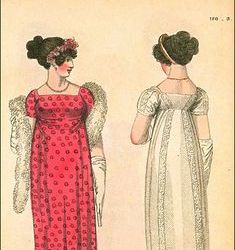
6 notes
·
View notes
Text
Indian Dark Academia
(just a glimpse because apparently it is huge!)
- reading Ismat Chughtai and Vijay Tendulkar to just to know how gay you are.
- quoting 'Annihilation of caste' at every possible occasion
- starting your day with Chai tea or Kesar kasturi and ending it with Yu.
- lucknowi chikan kurtas, Kanjeevaram sarees, Nehru jacket, silk shawls.
- daydreaming about being a university student in early twentieth century, roaming around the mossy campus in a loose kurta, discussing politics by day and planning revolution by night.
- learning and writing about Kashmir and issues faced by Kashmiris and ending up having major crush on Shahid Ali.
- going to every mushaira and quwwali in town.
- visiting south Indian temples and ending up falling in love with the languages and culture.
- reading about the Mughal courts and towns.
- idolising Rani Laxmi Bai, Razia Sultan, Rani Chennamma and Begum Samru.
- having an extensive collection of itr to suit your everyday mood.
- listening to Gandhi and Nehru.
- reciting Tagore purely by memory.
- visiting Ajanata caves and the state of Orissa.
- having an intimate relationship with food.
- being overcome by tenderness and pain simultaneously every time you watch Umrao Jaan (1981)
- loving the work of Premchand and Manto more than anything else on the planet.
- going to Chittorgarh fort/Red fort/City palace and dreaming of living there forever.
- trying to learn 4 native languages at the same time.
- being protective about the era of music you like.
40 notes
·
View notes
Text
Kashmiri Essentials for the Winter
As winter unveils its cold demeanor, fashion enthusiasts across the globe turn their attention to timeless and elegant winter wardrobe essentials. Let’s delve into the exquisite world of Kashmiri clothing, celebrating the rich heritage of winter essentials that have adorned the people of the valley for centuries. These Kashmiri essentials are not just garments; they are a testament to unparalleled craftsmanship, intricate hand embroidery, luxurious fabrics, and enduring silhouettes that stand the test of time.
The Art of Craftsmanship
One cannot speak of Kashmiri essentials without delving into the unparalleled craftsmanship that defines each piece. The intricate hand embroidery is a centuries-old tradition passed down through generations. Skilled artisans, often working meticulously for months, create elaborate patterns that tell stories of the valley's culture and history. The precision and attention to detail in Kashmiri embroidery make these winter essentials true pieces of art.
The Elegant Fabrics
Kashmiri clothing is synonymous with luxurious fabrics that not only provide warmth but also exude a regal charm. Pashmina, a fine type of cashmere wool, is a staple in Kashmiri shawls, known for its softness and unparalleled quality. Jackets and capes often feature handwoven silk and wool blends, adding a touch of opulence to the winter wardrobe. The use of high-quality materials ensures not only comfort but also longevity, making Kashmiri clothing a style investment that transcends seasons.
Exquisite Silhouettes
Kashmiri jackets, capes, Phiran, and shawls are celebrated for their timeless silhouettes that effortlessly blend tradition with contemporary style. The Phiran, a traditional Kashmiri long gown, has a loose fit, making it ideal for layering during the winter months. Jackets and capes, adorned with intricate embroidery, come in a variety of styles, from fitted to flared, catering to diverse fashion preferences. The versatility of Kashmiri silhouettes allows them to seamlessly transition from formal occasions to casual outings, making them a wardrobe staple for years to come.
Style Investment and Luxury
Investing in Kashmiri essentials is not merely a purchase; it is an investment in style and luxury. The timeless appeal of these garments ensures that they remain relevant season after season, making them a wise addition to any fashion-conscious individual's wardrobe. Whether it's a hand-embroidered shawl passed down through generations or a contemporary Kashmiri jacket, these pieces carry a sense of history and cultural significance, adding a layer of sophistication to one's style.
Versatility Across Occasions
Kashmiri clothing effortlessly caters to a variety of occasions. A finely embroidered Phiran can be a statement piece for formal events, while a delicately woven Pashmina shawl adds a touch of grace to everyday attire. The versatility of Kashmiri essentials allows individuals to express their unique style while embracing the rich cultural heritage embedded in each thread. From festive gatherings to cozy evenings by the fireplace, these garments seamlessly blend comfort and style.
Elegance Beyond Trends
In a world that often chases fleeting trends, Kashmiri essentials stand out as symbols of enduring elegance. The timeless nature of these garments transcends seasonal fads, making them a valuable addition to any fashion enthusiast's collection. The handcrafted details, luxurious fabrics, and sophisticated silhouettes ensure that Kashmiri clothing remains a symbol of refinement, defying the passage of time.
As winter settles in, the allure of Kashmiri essentials beckons fashion enthusiasts to embrace a style that transcends trends and seasons. From the intricate craftsmanship to the luxurious fabrics and timeless silhouettes, each piece tells a story of tradition, culture, and unparalleled elegance. Investing in Kashmiri clothing is not just a purchase; it's an investment in a legacy of craftsmanship and style that will be cherished for years to come.
Visit www.luxuriesofkashmir.com to indulge in some authentic Kashmiri staples that have been crafted with love. Elevate your wardrobe with the grace and sophistication of Kashmiri essentials, celebrating the artistry that has adorned the people of the valley for centuries.

#Kashmiri jacket#Kashmiri clothing#Kashmiri Phiren#Kashmiri Stoles#Kashmiri Embroidery Shawls#Kashmiri Shawls
0 notes
Text
Winter Trends ft. Luxe Kashmiri Staples
It’s that time of the year when the leaves change colors and the air turns cold welcoming the enchanting season of winter. With its cozy moments and festive celebrations, winter brings along a unique charm. It is also that time of the year where it is recommended you revamp your wardrobes with warm and stylish snug Kashmiri staples that make quite the fashion statement. Let’s explore the exquisite world of Kashmiri fashion and its timeless winter staples that are pieces of art that reflect centuries of craftsmanship and tradition.
The Timeless Charm of Phirans
One of the most iconic and beloved winter staples from Kashmir is the Phiran. The flowing, knee-length garments are a blend of comfort and elegance, making them perfect for chilly days and nights. Phirans come in various styles, from simple and classic to intricately embroidered works of art.
Traditionally, they are made from warm wool or other natural fibers, ensuring that you stay warm while looking effortlessly stylish.
The most distinguishing feature of a Phiran is its loose and roomy fit, making it suitable for layering over other clothing. This characteristic not only provides warmth but also allows for freedom of movement, a must during the winter season.
Pashmina Capes: A Luxurious Layering Option
Pashmina Capes are another exquisite addition to the winter fashion scene. These luxurious garments are crafted from the fine, ultra-soft wool of the Himalayan Pashmina goat. Pashmina wool is renowned for its incredible warmth and featherlight weight, making it the ideal choice for winter wear.
Pashmina Capes are not only warm but also incredibly chic. They come in a variety of colors and designs, allowing you to express your personal style while staying cozy. You can drape them over your shoulders for a sophisticated look or cinch them at the waist with a belt for a more fitted silhouette. Whether you're attending a winter wedding or simply strolling through the city, a Pashmina Cape is sure to turn heads and keep you warm at the same time.
The Versatility of Kashmiri Jackets
Kashmiri jackets are yet another winter trend that has gained popularity for their versatility and timeless appeal. Crafted with precision and artistry, these jackets are perfect for those who want to stay warm without sacrificing style. They come in various lengths and styles, from waist-length to ankle-length, and can be worn with a range of outfits.
Kashmiri jackets are often adorned with intricate embroidery, reflecting the rich cultural heritage of the region. The craftsmanship that goes into creating these pieces is truly awe-inspiring, with each design telling a unique story. These jackets are typically made from high-quality materials like wool or silk, ensuring both warmth and durability.
One of the standout features of Kashmiri jackets is their adaptability. You can pair them with jeans and a simple tee for a casual look or wear them over a traditional Indian outfit for a touch of elegance. Their ability to seamlessly blend with different styles and occasions makes them a must-have addition to your winter wardrobe.
In the midst of winter's chill, there's no need to compromise on style or warmth. Luxe Kashmiri staples, including Phirans, Pashmina Capes, Jackets from Luxuries of Kashmir offer the perfect blend of tradition, craftsmanship, and fashion. These timeless pieces not only keep you snug during the coldest months but also add an element of elegance to your winter wardrobe.

0 notes
Text
Some Tips to Buy the Perfect Wedding Sherwanis
It's wedding season, and wedding bells signal a very special day for the bride and groom. Previously, the focus was solely on the bride's attire because it was assumed that men did not have much choice. Current fashion trends have altered this perception. In fact, our designers worked hard to develop a separate line for men's clothing. This has provided an interesting range of options for the groom to consider.
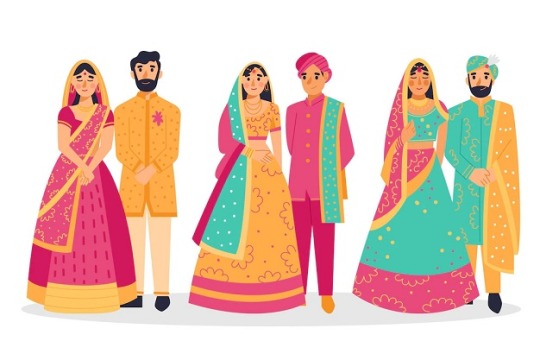
Men's Sherwanis worn over cotton vest have always been popular, and they can be considered the signature attire for the big day. Sherwanis are still popular, but they are much more charming and well-designed than their older, more modest counterpart. This twist in the story has increased the romance and excitement for men on their wedding day.
The groom should do some research before selecting this Ethnic attire, which consists of a knee-length coat with a Chinese collar and buttons in the front. This way, he could find the perfect piece to make his presence on his wedding day more significant.
A few tips for buying a wedding sherwani:
1. Choose the style that looks the best on you:
When shopping for a Sherwani to wear on your wedding day, choose a pattern and style that makes you appear taller and more built. The trick is in the attire you pair with your Sherwani. It could be a dhoti, a salwar, or a churidaar. If you are slim, a dhoti or a salwar suit is a better choice. Churidaar will make a heavy-built man look smarter. The same is true for embroidery or embellishments. If you are short, a heavily embellished Sherwani can make you appear taller. Again, solid dark colors make you appear slimmer.
2. Choose the work that stands out on fabric:
Sherwanis come in a variety of rich and grand embellishment styles. Embroideries such as kasab work, jaal work, Kashmiri work, and chikan are popular these days. You can also choose ones with stone work for an added sheen.
3. Be a little more experimental:
Today's designers are experimenting with new looks for traditional sherwanis. The styles that have given them a makeover can be seen. The groom has many options, including Achkan, Jacket, Angrakha, Patiala, and Pathani styles. To enjoy the best in fashion and glamour, wear fusion wear.
4. The designer look:
Enjoy a designer look by wearing a well-stitched and finely crafted Sherwani. If you purchase your wedding Sherwani from an authentic store, you will never go wrong in making that lasting impression. Check the store's credentials even if you're buying it online. Before selecting your store, read the customer reviews.
5. To get that glam look, pay attention to the finish and fabric:
A high-quality fabric will never let you down. If you are having your Sherwani made by a tailor, choose superior fabrics such as silk, brocade, and velvet for your big day. They will make your outfit look more opulent.
Buy the most exquisite wedding sherwanis
A Sherwani is a long, buttoned jacket with bandh gala. Though sherwanis began as a fusion of the British frock coat and an achkan, they were quickly adapted to become entirely Indian. Sherwanis arrived in India to stay and became an important part of Indian traditional formal attire, particularly at traditional ceremonies such as weddings. Sherwanis have existed in various forms, and our politicians and Bollywood actors have aided in their popularity.
Sherwanis paired with cotton lungi have never been considered outdated as a fashion wear, and Indian bridegrooms do not need to look elsewhere for any other attire as this garb enhances slenderness while also bringing that macho look in the most dignified manner. Sherwanis, in short, personify a gentleman while also adding grace, elegance, and style to the individual.
Dressing as a bridegroom is a once-in-a-lifetime opportunity, and it is also a time when all eyes are on you. Everyone is attempting to assess the personality of this young man as he enters a new phase of family life with many responsibilities to bear in the future. People from the bride's family, in particular, want the groom to be the perfect man for their daughter. It is important to dress impeccably and presentably here.
Wedding Sherwanis attest to the fact that Indian weddings are all about beautiful attire, delicious food, and a lot of fun. These sherwanis are made of rich fabric that is heavily embellished with gold thread or hand embroidery and may have contrasting buttons. The stitching with the right cuts to enhance the person's masculinity is the most important factor in turning this attire into an awe-inspiring garb.
When it comes to shopping for wedding apparel, one always wishes to go to the most genuine store that one knows of, but it can be a tiresome experience to go around shopping for wedding stuff that is time consuming. Shopping has become much more convenient in recent years, with online stores catering to all of one's needs. Though the online market is flooded with wedding attires for both genders, it is critical to check the authenticity and quality of these stores so that you get the best products at the most reasonable prices. It is advisable to conduct research and learn about the policies of the store from which you intend to purchase your Wedding Sherwani so that your online shopping experience is pleasant and hassle-free.
#Traditional#clothing#style#tips#fashion#wedding#fabric#cotton cloths#groom#pattern#jacket#outfits#purchase#online
0 notes
Text
A Guide to buying cashmere shawl | Queenmark
Cashmere shawls provide great warmth and are versatile enough to wear throughout each season. Since shawls generally cover your shoulders and part of your arms and upper back, they aren’t sufficient on their own to use instead of a jacket in extremely cold temperatures.

Here is quick guide to choosing the best quality of shawls:-
Fabric and Texture guide
Because you'll be wearing the shawl around your neck and close to your face, you'll want to make sure it doesn't irritate your skin, create itching, or trigger an allergic reaction. Different types of wool provide a lot of warmth, but some are bulky and irritating. Silk scarves are attractive and appropriate for all seasons, While the Kashmiri shawl is luxurious and warm. Acrylic and other blended materials make the cloth affordable, lightweight, warm, and durable, while viscose is breathable, smooth, and drapes beautifully. Natural cotton is less likely to irritate or aggravate sensitive or allergic skin.
Choose a colour which suits your complexion
As winter shawl are worn so near to the face, it's crucial to pick a colour that complements your skin tone. Avoid light colours that can dull your complexion if you have light skin. Choose colours of crimson, orange, brown, jade, emerald green, and deeper blue. When it comes to blue and green tones, matching a shawl to your eye colour can make your eyes pop.
If you have a dark complexion, lighter hues are preferable. Dark purple, brown, and black colours might obscure your features, but lighter colours generate contrast.
Wearing the proper colour scarf for your skin tone allows you to wear colours that would otherwise seem unflattering on you. What makes a difference is a hue next to your face, which will inevitably influence whether or not the ensemble works with your skin tone.
Prints and Patterns
Contrary to popular opinion, pattern-on-pattern can work in some situations. Men can wear a printed tie with a striped or checked shirt, while women can wear shawls with pattern designs with printed clothing. Layering large and small-scale patterns is one of the most effective techniques to achieve this. When a small-scale printed shirt is paired with a large-scale patterned shawl wrap, the little blouse motifs become neutral. To avoid overkill, make sure the colours are complementary.
Brightly patterned shawls can be used to dress up boring and monochromatic clothing, while neutral colours can help you transition from day tonight.
0 notes